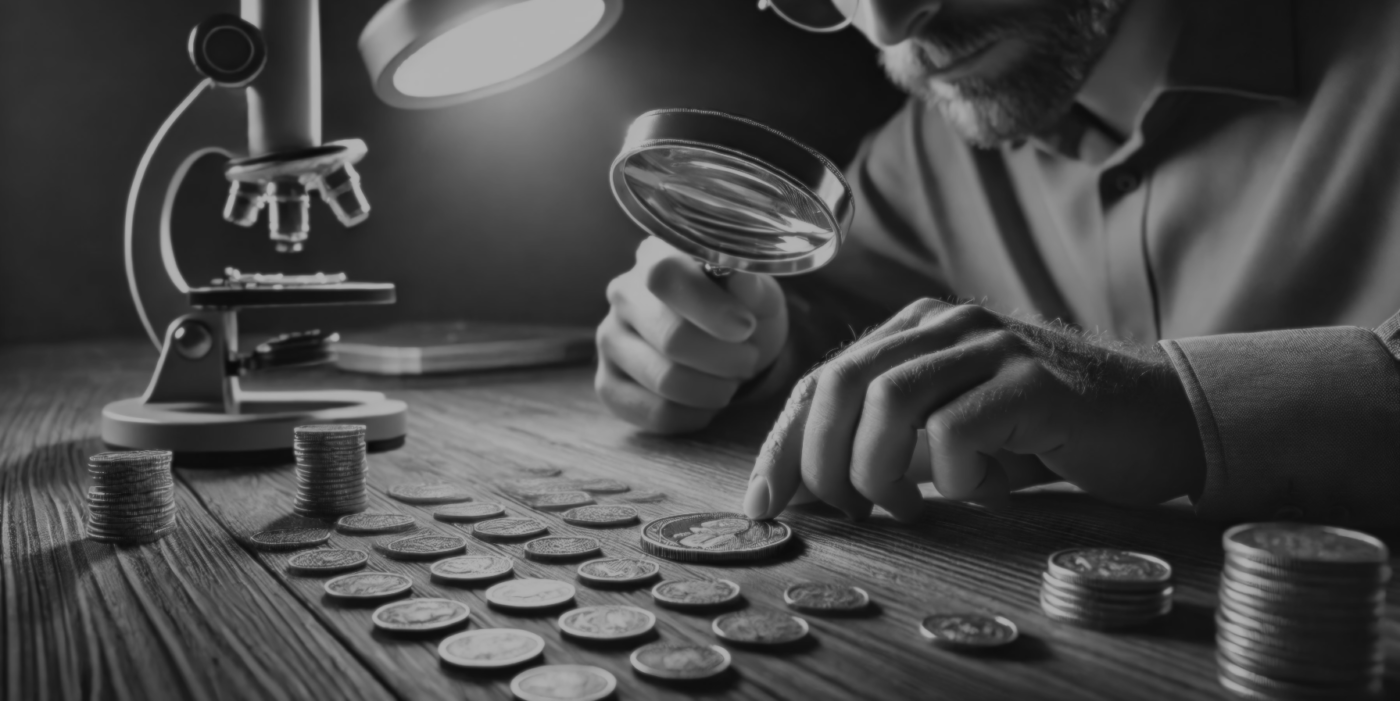How to Identify Fake Coins: A Guide for Collectors
🕵️♂️ As numismatics continues to grow in popularity, the market for rare and valuable coins has attracted counterfeiters aiming to profit from unsuspecting collectors. Identifying fake coins is an essential skill for any collector, as counterfeits can range from poorly made copies to highly sophisticated replicas that closely resemble genuine items. Here are some key tips and techniques to help you identify fake coins and protect your collection.
1. Inspect the Weight and Dimensions
⚖️ One of the most reliable ways to detect a fake coin is by checking its weight and dimensions. Genuine coins are minted to exact specifications, including weight, diameter, and thickness. Use a precise scale and caliper to measure the coin and compare it to the known standards for that type of coin. Even slight deviations can indicate a counterfeit, especially if the coin is supposed to be made from a precious metal like gold or silver.
2. Analyze the Metal Composition
🔬 Many counterfeit coins are made from base metals that are plated or treated to look like precious metals. A genuine coin’s metal composition can be verified through tests such as the magnet test (most genuine coins are non-magnetic) or more advanced methods like X-ray fluorescence (XRF) analysis, which can determine the exact elemental makeup of a coin without damaging it. Investing in a small but accurate metal testing kit can save you from costly mistakes.
3. Check for Edge Details and Inscriptions
🔍 Edges and inscriptions are often overlooked by counterfeiters, making them a good area to inspect. Check for the correct number of reeding lines (the grooved edges on many coins) and ensure inscriptions are sharp, clear, and correctly spelled. Counterfeit coins may have uneven or poorly defined edges and inscriptions, indicating subpar manufacturing techniques.
4. Examine the Coin’s Surface and Finish
🧴 The surface and finish of a coin can reveal a lot about its authenticity. Genuine coins, especially older ones, will have specific signs of wear that correspond with their age and metal type. Look for inconsistencies in the coin’s patina, such as unnatural colors or an overly shiny surface on what should be a circulated coin. Also, examine the coin under magnification to spot any casting seams, pits, or bubbles—telltale signs of a counterfeit.
5. Study the Design and Details
🖼️ Authentic coins have precise and intricate designs that are difficult to replicate accurately. Compare the coin in question to high-quality images of known genuine examples, paying close attention to details like the font, spacing, and size of letters and numbers. Counterfeit coins often have subtle differences in these areas, such as uneven or incorrect fonts, or minor design errors that can expose them as fakes.
6. Use Professional Authentication Services
📜 If you’re ever in doubt, or if you’re dealing with a high-value coin, consider having it authenticated by a professional service such as the Professional Coin Grading Service (PCGS) or the Numismatic Guaranty Corporation (NGC). These organizations provide expert evaluation and encapsulation of coins, offering collectors peace of mind with a guarantee of authenticity. While there’s a fee for these services, it’s a worthwhile investment to protect yourself from costly mistakes.
7. Educate Yourself Continuously
📚 The world of coin collecting is constantly evolving, and so are the methods used by counterfeiters. Stay informed by reading up on the latest counterfeit detection techniques, attending numismatic shows and workshops, and joining collector groups where you can learn from experienced numismatists. The more you know, the better equipped you’ll be to spot a fake coin.
Disclaimer: The information provided in this blog post is for educational purposes only and does not constitute professional or financial advice. Always exercise caution and seek expert verification when dealing with potentially counterfeit coins. Protecting your collection requires diligence and a commitment to learning the ins and outs of numismatics.

